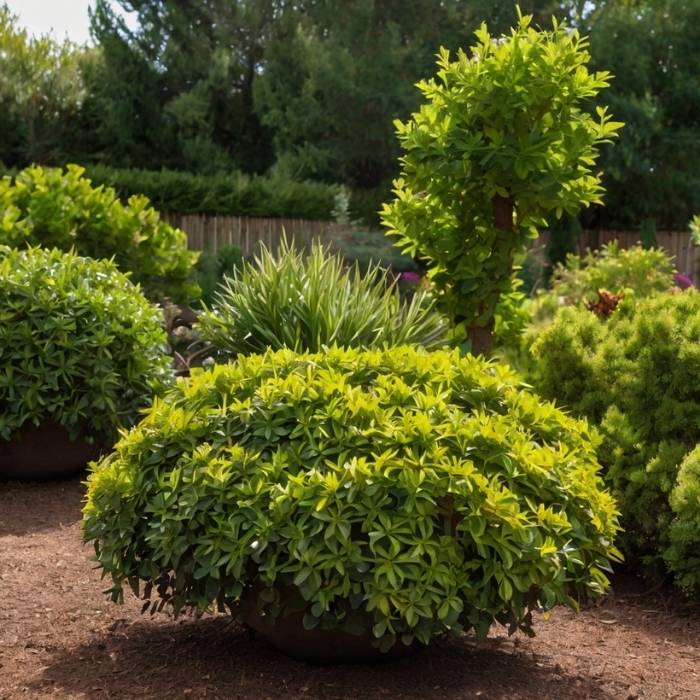Deciduous Shrubs: A Comprehensive Guide to Beautifying Your Landscape
Deciduous shrubs are a versatile and dynamic addition to any garden or landscape. Known for their seasonal changes, these plants shed their leaves in the fall, revealing stunning branch structures in winter, and burst back to life with vibrant foliage and blooms in spring and summer. Whether you’re a seasoned gardener or a beginner, deciduous shrubs offer endless possibilities for creating a visually appealing and eco-friendly outdoor space.
In this guide, we’ll explore everything you need to know about deciduous plants, including their benefits, popular varieties, planting tips, and maintenance practices. Let’s dive in!
What Are Deciduous Shrubs?
Deciduous shrubs are woody plants that lose their leaves annually, typically in the fall. This natural process allows them to conserve energy during the colder months and prepare for a fresh growth cycle in the spring. Unlike evergreen shrubs, which retain their foliage year-round, deciduous shrubs provide a constantly changing landscape that reflects the seasons.
These shrubs come in a wide range of sizes, shapes, and colors, making them suitable for various landscaping needs. From flowering varieties like hydrangeas to foliage-focused options like burning bushes, there’s a deciduous shrub for every garden style.
Benefits of Deciduous Shrubs
1. Seasonal Interest
Deciduous shrubs offer year-round visual appeal. In spring and summer, they showcase lush foliage and vibrant blooms. In fall, their leaves often turn stunning shades of red, orange, and yellow before dropping. During winter, their bare branches add texture and structure to the landscape.
2. Low Maintenance
Once established, many deciduous shrubs require minimal care. They are generally hardy and adaptable, making them a great choice for busy homeowners.
3. Wildlife Support
Deciduous shrubs provide food and shelter for birds, butterflies, and other wildlife. Berries, seeds, and flowers attract pollinators, while dense foliage offers nesting sites.
4. Versatility
These shrubs can be used in various ways, including as hedges, focal points, or background plantings. They also work well in mixed borders, foundation plantings, and container gardens.
Popular Varieties of Deciduous Shrubs
Here are some of the most beloved deciduous shrubs, each with its unique characteristics:
1. Hydrangea (Hydrangea spp.)
Hydrangeas are prized for their large, showy flower clusters that come in shades of pink, blue, white, and purple. They thrive in partial shade and moist, well-drained soil.
2. Lilac (Syringa vulgaris)
Lilacs are known for their fragrant, cone-shaped flowers that bloom in spring. They prefer full sun and well-drained soil and are perfect for creating a nostalgic cottage garden vibe.
3. Forsythia (Forsythia spp.)
Forsythias are early bloomers, producing bright yellow flowers in late winter or early spring. They are easy to grow and can be used as hedges or standalone specimens.
4. Burning Bush (Euonymus alatus)
This shrub is famous for its fiery red fall foliage. It’s low-maintenance and thrives in full sun to partial shade.
5. Spirea (Spiraea spp.)
Spireas are compact shrubs with clusters of small flowers in spring or summer. They are drought-tolerant and ideal for borders or mass plantings.
6. Viburnum (Viburnum spp.)
Viburnums offer multi-season interest with their spring flowers, summer berries, and fall foliage. They are versatile and can grow in a range of conditions.
How to Plant Deciduous Shrubs
Planting deciduous shrubs correctly is essential for their long-term health and growth. Follow these steps to ensure success:
1. Choose the Right Location
Consider the shrub’s sunlight, soil, and space requirements. Most deciduous plants prefer well-drained soil and at least 6 hours of sunlight per day.
2. Prepare the Soil
Amend the soil with organic matter like compost to improve drainage and fertility. Test the soil pH to ensure it matches the shrub’s needs.
3. Dig the Hole
Dig a hole twice as wide as the shrub’s root ball and just as deep. This allows the roots to spread easily.
4. Plant the Shrub
Place the shrub in the hole, ensuring the top of the root ball is level with the soil surface. Backfill the hole with soil and gently tamp it down.
5. Water Thoroughly
Water the shrub deeply after planting to help it establish roots. Add a layer of mulch around the base to retain moisture and suppress weeds.
Caring for Deciduous Shrubs
Proper care is key to keeping your deciduous plants healthy and thriving. Here are some essential tips:
1. Watering
While established shrubs are drought-tolerant, young plants need regular watering. Water deeply once a week, especially during dry spells.
2. Fertilizing
Apply a balanced fertilizer in early spring to promote healthy growth. Avoid over-fertilizing, as this can lead to excessive foliage at the expense of flowers.
3. Pruning
Prune deciduous plants in late winter or early spring before new growth begins. Remove dead, damaged, or crossing branches to improve air circulation and shape the plant.
4. Pest and Disease Control
Monitor your shrubs for signs of pests or diseases, such as aphids, powdery mildew, or leaf spot. Treat issues promptly with organic or chemical solutions.
5. Winter Protection
In colder climates, protect young shrubs from frost by wrapping them in burlap or applying a thick layer of mulch around the base.
Design Ideas for Using Deciduous Shrubs
Deciduous shrubs are incredibly versatile and can be used in countless ways to enhance your landscape. Here are a few ideas:
1. Create a Focal Point
Use a striking shrub like a hydrangea or viburnum as a centerpiece in your garden.
2. Build a Hedge
Plant shrubs like forsythia or spirea in a row to create a natural privacy screen or windbreak.
3. Add Color to Borders
Incorporate flowering shrubs like lilacs or azaleas into mixed borders for seasonal color.
4. Enhance Foundation Plantings
Use low-growing shrubs like dwarf spirea to frame your home’s entrance or soften hardscapes.
5. Attract Wildlife
Plant berry-producing shrubs like viburnum or dogwood to attract birds and other wildlife to your garden.
Frequently Asked Questions About Deciduous Shrubs
1. When is the best time to plant deciduous shrubs?
The best time to plant deciduous shrubs is in early spring or fall when the weather is cool, and the soil is workable.
2. How often should I prune deciduous shrubs?
Most deciduous shrubs benefit from annual pruning in late winter or early spring. However, flowering shrubs should be pruned after they bloom to avoid cutting off next year’s buds.
3. Can deciduous shrubs grow in containers?
Yes, many deciduous plants can thrive in containers, provided they have adequate drainage and are watered regularly.
4. What are the fastest-growing deciduous shrubs?
Forsythia, spirea, and burning bush are among the fastest-growing deciduous shrubs, making them ideal for quick landscaping solutions.
5. Do deciduous shrubs lose their leaves in warm climates?
In warmer climates, some deciduous plants may retain their leaves longer or exhibit less dramatic color changes in the fall.
Conclusion
Deciduous shrubs are a fantastic way to add beauty, structure, and biodiversity to your garden. With their ever-changing appearance and low-maintenance nature, they offer something for everyone, whether you’re looking to create a vibrant flower border, a natural privacy screen, or a wildlife-friendly habitat.
By choosing the right varieties, planting them correctly, and providing proper care, you can enjoy the many benefits of deciduous plants for years to come. So, why not start planning your landscape today and bring the magic of these versatile plants to your outdoor space? Gardener’s Delight: Expert Tips for a Thriving, Joyful Garden

